#Louise Vigee-Lebrun
Explore tagged Tumblr posts
Text

Julie as Flora, Roman Goddess of Flowers
Artist: Élisabeth Louise Vigée Le Brun (French, 1755–1842)
Genre: Portrait
Date: 1799
Medium: Oil on Canvas
Collection: Museum of Fine Arts, St. Petersburg, Florida
Painted in 1799, Julie LeBrun as Flora is a sophisticated allusion to Roman antiquity. It depicts the artist's daughter, Julie LeBrun (1780–1819), in the guise of the goddess of flowers. This is the last known composition that she painted of her daughter.
#portrait#elisabeth louise vigee le brun#french painter#julie lebrun#roman goddess#flowers#basket#white gown#18th century painter#france#european#landscape#wreath#allegory
11 notes
·
View notes
Text

Marie Antoinette in Court Dress
Artist: Elisabeth Louise Vigée Le Brun (French, 1755–1842)
Date: 1778
Medium: OIl on canvas
Collection: Metropolitan Museum of Art, New York City, NY, United States
Description
In 1777, Empress Maria Theresa of Austria wrote to her daughter Marie Antoinette (1755–1793) asking for a portrait. Vigée Le Brun received the commission, her first from the queen. She remembered that the queen "walked better than any other woman in France, holding her head very high with a majesty that singled her out in the midst of the entire court."
#portrait#marie antoinette#empress#french culture#elisabeth louise vigee lebrun#french painter#standing#female#court dress#coif#table#royal crown#chair#classic column#bust#vase#flowers#french art#french royalty#french monarchy
12 notes
·
View notes
Photo

Self-portrait in a Straw Hat by Elisabeth Louise Vigee Lebrun (1782, Öl auf Leinwand)
#art#artwork#kunst#kunstwerk#elisabeth louise vigee lebrun#artist#künstlerin#frau#woman#portrait#porträt#self-portrait#selbstporträt#standing#stehend#hat#hut#straw hat#strohhut#color palette#farbpalette#colors#farben#painting#malen#brushes#pinsel#beauty#schönheit#oil painting
10 notes
·
View notes
Text
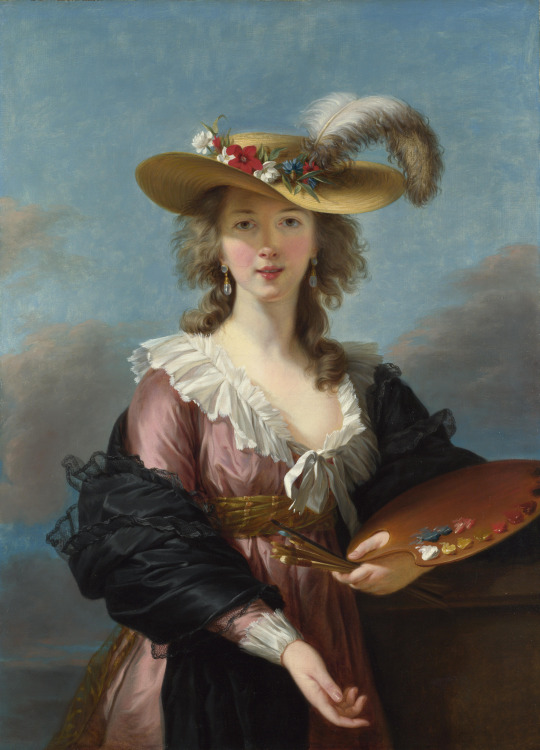
Élisabeth-Louise Vigée-Le Brun, Self-portrait in a Straw Hat, ca. 1782, oil/canvas (National Gallery, London)
#elisabeth vigee lebrun#elisabeth louise vigee lebrun#art#self portrait#portrait#painting#rococo#18th century#woman artist
11 notes
·
View notes
Text
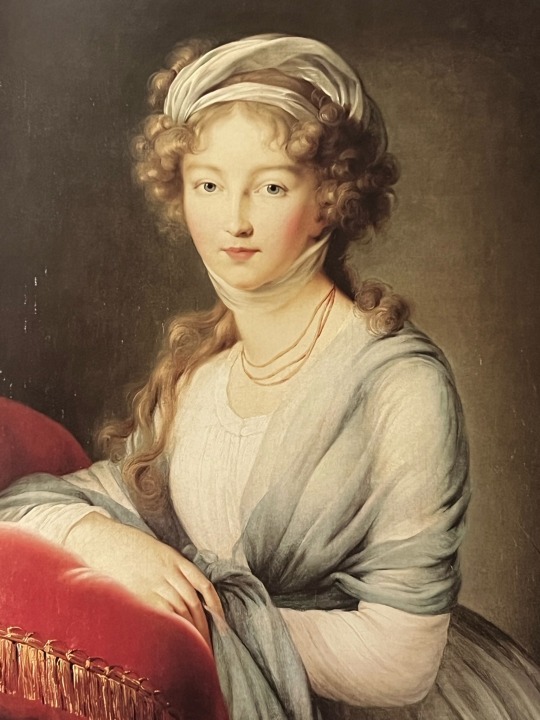
“Her features were fine and regular and her face a perfect oval. Her pretty complexion was not animated but of a paleness totally in harmony with her face, which was of an angelic sweetness. Her ash-blond hair floated around her neck and forehead. She was dressed in a white tunic fastened by a girdle knotted casually around a waist as fine and supple as that of a nymph.”
- Marie Louise Elisabeth Vigee-Lebrun on the future Empress Elizaveta Alexeievna of Russia.
43 notes
·
View notes
Text

The Vicomtesse de Vaudreuil, Élisabeth Louise Vigée Le Brun (1785). J. Paul Getty Museum in Los Angeles.
#art#art history#artists on tumblr#painting#aesthetic#portret#portrait#women portraits#elisabeth louise vigee le brun#elisabeth vigee lebrun#oil portrait#french artist#french art#french painter#french painting#woman portrait#woman artist#late 18th century#18th century art#18th century#1700s art#1700's art#late 1700s#1780s#1700s painting#dress#1785#peintre français#peinture française#peinture
67 notes
·
View notes
Text
welcome to TheArtofVigéeleBrun! I’m glad you’re here
As expected, here you’ll find everything related to Élisabeth Vigée le Brun, a French artist of the Georgian period. This masterpost can be used to navigate this blog (by using the tags below) and to find a biography on Vigée le Brun. I hope you enjoy this collection of her art, and that you come to appreciate her craft as much as I do :)

Self-Portrait in a Straw Hat (1782)
Élisabeth Louise Vigée le Brun
born: 16 April 1755 Paris, France
died: 30 March 1842 (aged 86) Paris, France
Madame le Brun was a French portrait artist in the late 18th and early 19th centuries. While much of her paintings were done in her home country of France, she also lived and worked in Italy, Austria, Russia, and Germany as a fleeing Royalist following the French Revolution.
Besides Vigée le Brun, some of my other favorite artists are Botticelli, Leonardo DaVinci, Egon Schiele, Georgia O’Keeffe, Tabuco, Gustav Klimt, Artemisia Gentileschi, Sofonisba Anguissola, Frank Xaver Winterhalter, & Janet Hayden.
#theartofvigeelebrun#elisabeth vigee lebrun#elisabeth vigee le brun#louise vigee le brun#madame le brun#rococo#high rococo#neoclassicism#women painters#painting#painters#historical painting
4 notes
·
View notes
Text












El simbolismo de la Naturaleza: Las rosas
En todas las culturas las flores han tenido un papel muy relevante en cuanto a símbolos se refiere. Asociadas a valores, virtudes y a la comunicación de significados profundos, la rosa es una flor con especial presencia en el imaginario colectivo.
Los significados de la rosa van desde la juventud, la pureza, la perfección, el amor terrenal y el renacimiento, hasta la pasión, el cortejo, el matrimonio y la muerte. El significado que se le asigne está determinado por su color.
Las rosas rojas y rosadas han sido utilizadas en pócimas de amor, en perfumes, cosméticos, tés y remedios medicinales. Aparecen en los retratos femeninos acompañando a las protagonistas en jarrones o a manera de adornos corporales. Significan mensajes de amor y belleza. En Occidente se suspendía una rosa en el techo para que oscilara en el centro de una mesa. Esto significaba que todos los secretos que se confesaran en la habitación debían ser guardados. En el arte de la época victoriana su representación es frecuente y está asociada a la discreción. En el imaginario católico, las rosas se relacionan con el rosario —su nombre deviene de ellas—, pues son símbolo del amor maternal de la Virgen María. También, el color rojo simboliza la sangre de Cristo.
Las rosas blancas son las flores de la luna; simbolizan pureza, virginidad, encanto y discreción. Numerosas santas como Santa Rosa de Lima, aparecen con flores blancas en alusión a su pureza y castidad. La rosa blanca fue el emblema de la casa inglesa de York, que se enfrentó a los Lancaster en la Guerra de las Dos Rosas. Por su parte, las rosas amarillas se asocian con los celos y la infidelidad. En 1759, por orden papal, se creó la Orden de la Rosa Dorada, a la que ingresan soberanas católicas.
www.tarotdeana.tumblr.com
Imágenes:
"Still life, Roses", por Joseph Rodefer.
"Roses", por Rudolfs Perle.
"Helen of Troy", por Evelyn de Morgan.
"Queen Eleanor and the Fair Rosamund", por Evelyn de Morgan.
"Roses and peonies", por Vincent van Gogh.
"The King and his Court", por Edward Burne-Jones.
"Madonna and Child", por un seguidor de Fra Filippo Lippi.
"Amo Te Ama Me", por Sir Lawrence Alma-Tadema.
"Unfinished portrait of Her Majesty Queen Elizabeth The Queen Mother", por Augustus Edwin John.
"Catherine Howard, Lady d'Aubigny", por Anton van Dyck.
"María Antonieta, Reina de Francia", por Marie-Louise-Élisabeth Vigée-Lebrun.
"Santa Rosa de Lima con Niño Jesús", por Escuela Anónima del Cusco.
Lee mitos japoneses aquí.
Lee mitos coreanos aquí.
Lee mitos griegos aquí.
#tarot#cartomancia#tarot reading#ocultismo#ocultista#tarot cards#witchcraft#brujería#artes ocultas#cosas de brujas#roses#rosas#flores#alma tadema#evelyn de morgan#simbolismo#symbolism#símbolos#símbología#marie louise elisabeth vigee lebrun#arte#anton van dyck#van gogh#vincent van gogh
2 notes
·
View notes
Text

Mary Henry, copy after Elisabeth Louise Vigee-LeBrun, Portrait of a Girl, n.d., oil on paperboard, 13 1⁄2 x 10 in. (34.3 x 25.4 cm), Smithsonian American Art Museum, Gift of Miss Claire Lusby, 1966.11.2
0 notes
Text
actividad del día (de hoy)
Courbet, Manet, Monet, Matisse, Derain, Egon Schiele, Munch, Van Gogh, Modigliani, Picasso, Tristan Tzara, Max Ernst, Kurt Schwitters, Man Ray, De Chirico, Duchamp, Kandinski, Mondrian, Pollock... Lo discutimos hace unas semanas en clase: ¿por qué sólo hombres!
Les recomiendo hoy este agudo ensayo de Linda Nochlin sobre el patriarcado y la misoginia en el (h)arte: Why Have There Been No Great Women Artists?
Aquí algunas cosas que subrayé del texto:
Aceptar lo «natural» puede ser intelectualmente fatal. La naturalización se registra en la dominación inconsciente.
(Artemisia Gentileschi, Mme. Vigee-Lebrun, Angelica Kauffmann, Rosa Bonheur, Berthe Morisot, Suzanne Valadon, Kaethe Kollwitz, Barbara Hepworth, Georgia O'Keeffe, Sophie Taeuber-Arp, Helen Frankenthaler, Birdget Riley, Lee Bontecou, and Louise Nevelson, any more than that of Sappho, Marie de France, Jane Austen, Emily Bronte, George Sand, George Eliot, Virginia Woolf, Gertrude Stein, Anai's Nin, Emily Dickinson, Sylvia Plath, and Susan Sontag.)
La diferencia, quizá, entre la mirada femenina y la mirada masculina tiene que ver con el volumen. La mirada masculina es mucho más ancha, tiene más referencias y está mejor alimentada. Más y mejor cuidada.
[...] nor have there been any great Lithuanian jazz pianists or Eskimo tennis players. If women have in fact achieved the same status as men in the arts, then the status quo is fine. But… In the arts as in a hundred other areas, things remain stultifying, oppressive, and discouraging to all those —women included— who did not have the good fortune to be born white, preferably middle class and, above all, male.
The problem lies not so much with the feminists' concept of what femininity in art is, but rather with a misconception of what art is: with the naive idea that art is the direct, personal expression of individual emotional experience —a translation of personal life into visual terms.
The making of art involves a self-consistent language of form, more or less dependent upon, or free from, given temporally-defined conventions, schemata, or systems of notation, which have to be learned or worked out, through study, apprenticeship, or a long period of [social] experimentation.
What proportion of major artists came from families in which their fathers or other close relatives were engaged in related professions?
Piaget: la habilidad y la inteligencia se construye poco a poco, y los patrones de adaptación se establecen de forma tan sutil que parecen naturales.
Hopefully, by stressing the institutional, or the public, rather than the individual, or private, preconditions for achievement in the arts, we have provided a paradigm for the investigation of other areas in the field.
using their situation as underdogs and outsiders as a vantage point, women can reveal institutional and intellectual weaknesses in general, and, at the same time that they destroy false consciousness, take part in the creation of institutions in which clear thought and true greatness are challenges open to anyone —man or woman— courageous enough to take the necessary risk, the leap into the unknown.
Aceptar lo «natural» puede ser intelectualmente fatal. La naturalización se registra en la dominación inconsciente. Y la dominación inconsciente es esta: el artista es aquel con talento. ¡Falso! El arte se crea de manera institucional y pública. Contra el ego, el carácter individual y exclusivo, la mirada femenina, feminista: el arte horizontal, comunal, público y abierto, abierto a lo desconocido.
ACTIVIDAD DEL DÍA
Relaciona tres fragmentos del ensayo de Linda Nochlin con tres acciones distintas de las Gerrilla Girls. ¿Quiénes son las Guerrilla Girls? ¡Pues gugléalas!
En un documento, copia y pega el fragmento del ensayo de Linda Nochlin + una imagen de las Guerrilla Girls + una explicación de cómo se relaciona una cosa con la otra. Y sube eso al Canvas entre hoy y el viernes.

posdata:
En Sonus tienen programados dos ejercicios de preposiciones para esta semana: 1. Localización, 2. Clasificación.
Y para Álex deben corregir hoy el texto que subieron la semana pasada.
¿Otra cosa? ¿Les cambio el último examen de comprensión lectora de Conjunto vacío para el lunes? Va va va, les cambio el último examen de comprensión lectora de Conjunto vacío para el lunes. Terminen de leer el libro de Verónica Gerber Bicecci antes de su clase del lunes 13 de marzo.
1 note
·
View note
Photo
thevictorianlady:
The Bather (1792)
Elisabeth Louise Vigee LeBrun
The model for this painting was the artist’s daughter at age 12. This struck me as a strange position to paint your daughter in. She seems to be worried and shielding herself, like she’s afraid to be seen.

89 notes
·
View notes
Text

Portrait of Emma, Lady Hamilton as a Bacchante
Artist: Élisabeth Louise Vigée Le Brun (French, 1755–1842)
Genre: Portrait
Date: c. 1790
Medium: Oil on Canvas
Collection: Walker Art Gallery, Liverpool, England
Information
This painting of Emma, also known as Lady Hamilton, captures her mid-performance, playing a dancing Bacchante. Emma became famous and notorious in British artistic and society circles for these performances. With the help of veils and shawls she would pose in imitation of the figures on the Greek and Etruscan vases collected by her husband, nine of which are also in the Lady Lever's collection.
Vigée-Lebrun seems to have painted Emma on four occasions during the artist's stay in Naples between 1790 and 1792. The Lady Lever's portrait is thought to have been painted in 1792, shortly after Emma's marriage in 1791 to her much older and besotted admirer, Sir William Hamilton, Britain's diplomatic envoy to the Kingdom of Naples.
The Lady Lever's portrait remained with the artist all her life and was inherited by her niece. Whilst it was in the artist's studio she made various changes to it which were discovered during conservation work in 2015. One of the veils that Emma used in her performances originally floated down from her raised right hand, but this was painted out. The artist also adjusted the sleeve of Emma's ancient-Grecian-style tunic so as to show more of her slim upper arm and shoulder, making her even more alluring.
#portrait#bacchante#elisabeth louise vigee lebrun#french painter#performance#british#dancing#18th century painting#tambourine#landscape#volcano#artist#european
18 notes
·
View notes
Text
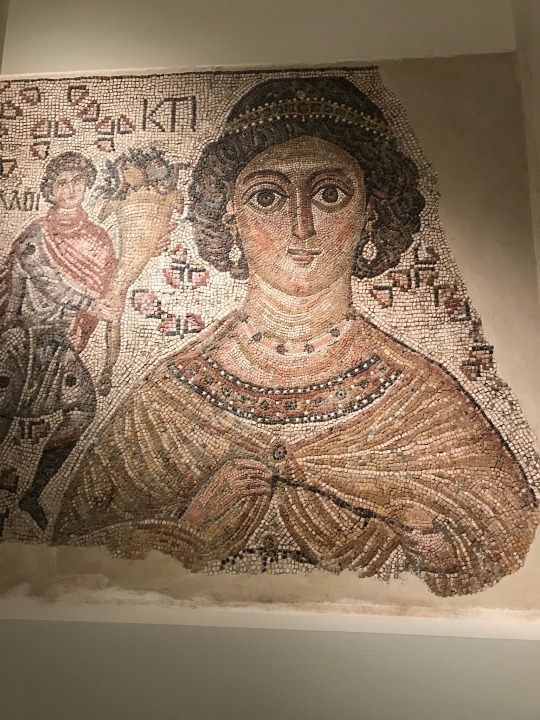
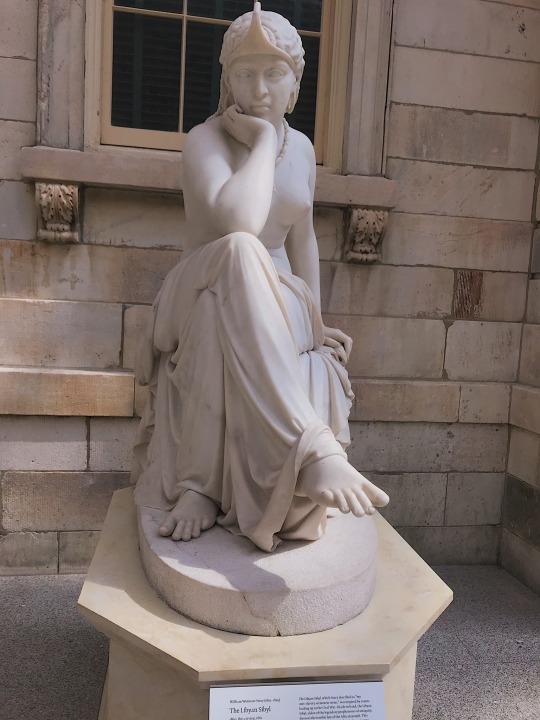
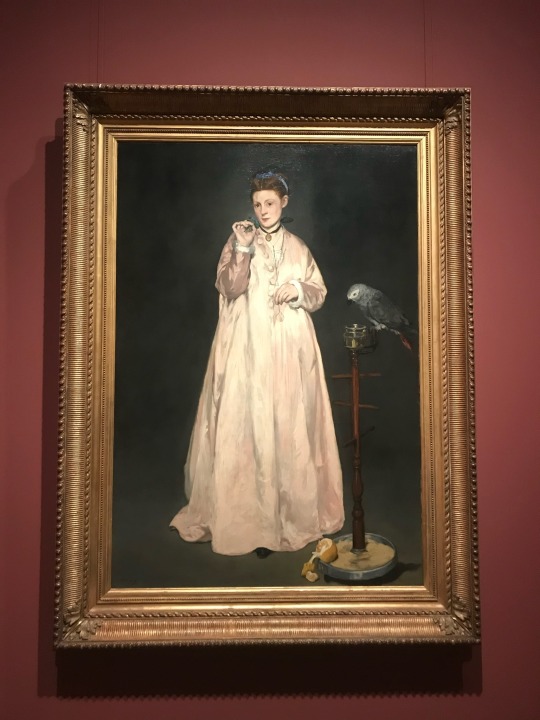

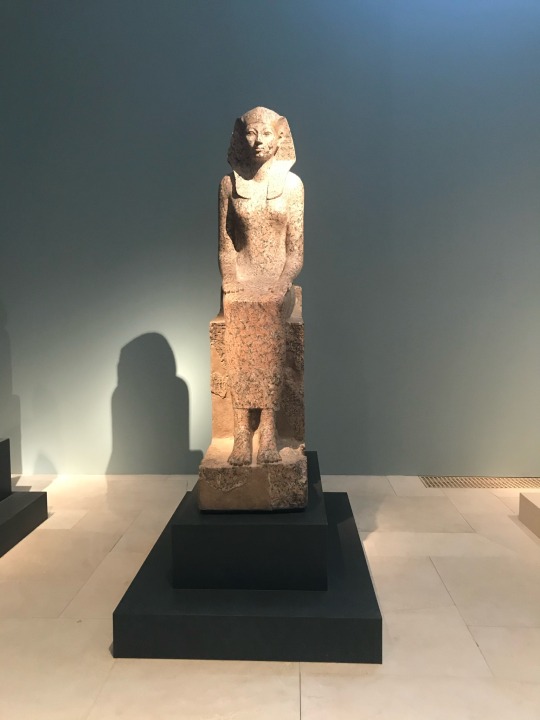

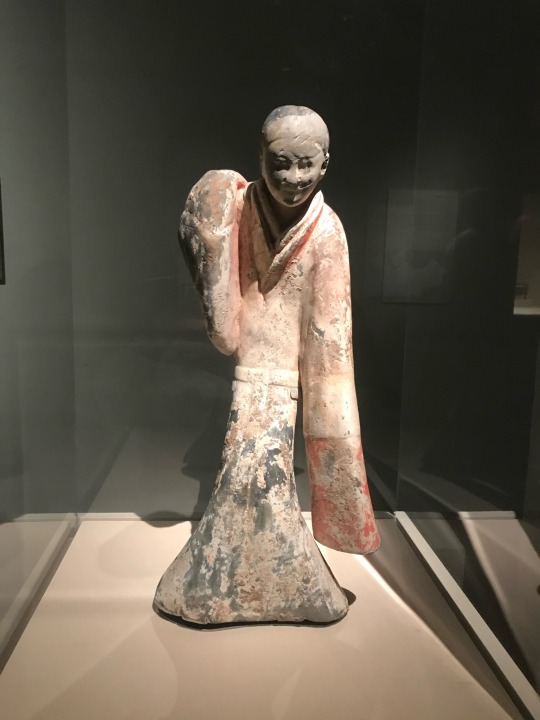
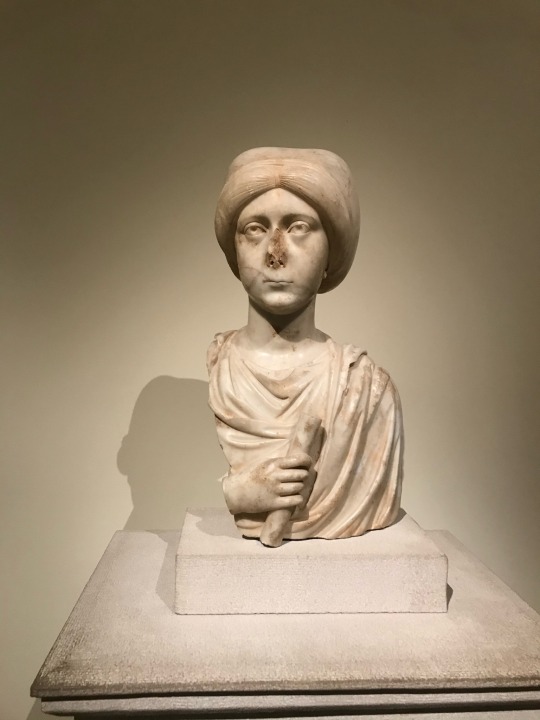

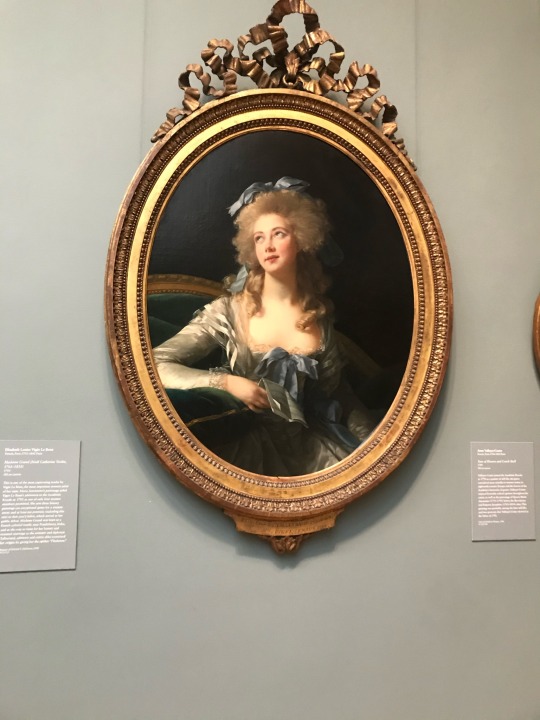
women depicted in art: from cleopatra to elisabeth vigée le brun to victorine meurent to hatshepsut and juliana anicia. saved all of these in a folder so my friends and I could pick one to post on international womens day based on what we’re focusing on in our studies but it’s all so beautiful i had to share
#light academia#100 days of productivity#tagamemnon#ancient greek#the secret history#donna tartt#statue#art museum#new york city#elisabeth louise vigee le brun#elisabeth vigee lebrun#byzantium#ancient rome#rome#greece#france#ancient egypt#cleopatra#william wetmore story#mosaic#hatshepsut#Electra#elektra#antigone#sophocles
201 notes
·
View notes
Photo

#Marie Charlotte Louise Perrette Aglaé Bontemps#comtesse#Comtesse de la Châtre#marie#elisabeth vigee lebrun#art#painting#1700s#bookworm
21 notes
·
View notes
Photo




It’s 1781 (top to bottom) -
1781 Marie Jeanne Puissant by Alexander Roslin (Rijksmuseum). From verenigingrembrandt.nl/nl/kunst/portret-van-marie-jeanne-puissant; erased most obvious spots and cracks w Pshop 1619X2043 @72 789kj.
1781 Mrs Russell, née Cox by John Smart (location ?). From wikiart.org/en/marie-gabrielle-capet-0/portrait-of-young-girl 1864X2344 @144 4.3Mp.
1781 Princesse de Lamballe print by Joseph Boze after Elisabeth-Louise Vigee-Lebrun. From vivelareine.tumblr.com/post/50546942835 1010X1540 @72 674kj.
1781 The Tea Gardens by ? (British Museum - London, UK). From their Web site 1912X2649 @72 2Mj.
#Rococo fashion#Louis XVI fashion#1780s fashion#1781 fashion#Alexander Roslin#John Smart#Joseph Boze#Elisabeth-Louise Vigee-Lebrun#Marie Jeanne Puissant#Princesse de Lamballe#The Tea Gardens#straight hair#curly hair large curl coiffure#high coiffure#hair flowers#hair feathers#chemise#square neckline#fur trim#cap#cap flowers#ribboned hats#apron#maxi-length skirt#train
30 notes
·
View notes
Text

“Their complexions were so fine and delicate that one could have believed they lived in ambrosia.”
- Marie Louise Elisabeth Vigee-Lebrun on Grand Duchesses Alexandra and Elena, granddaughters of Catherine the Great.
#grand duchess alexandra pavlovna#grand duchess elena pavlovna#romanov#russia#louise elisabeth vigee lebrun#0#portrait#quotes
32 notes
·
View notes